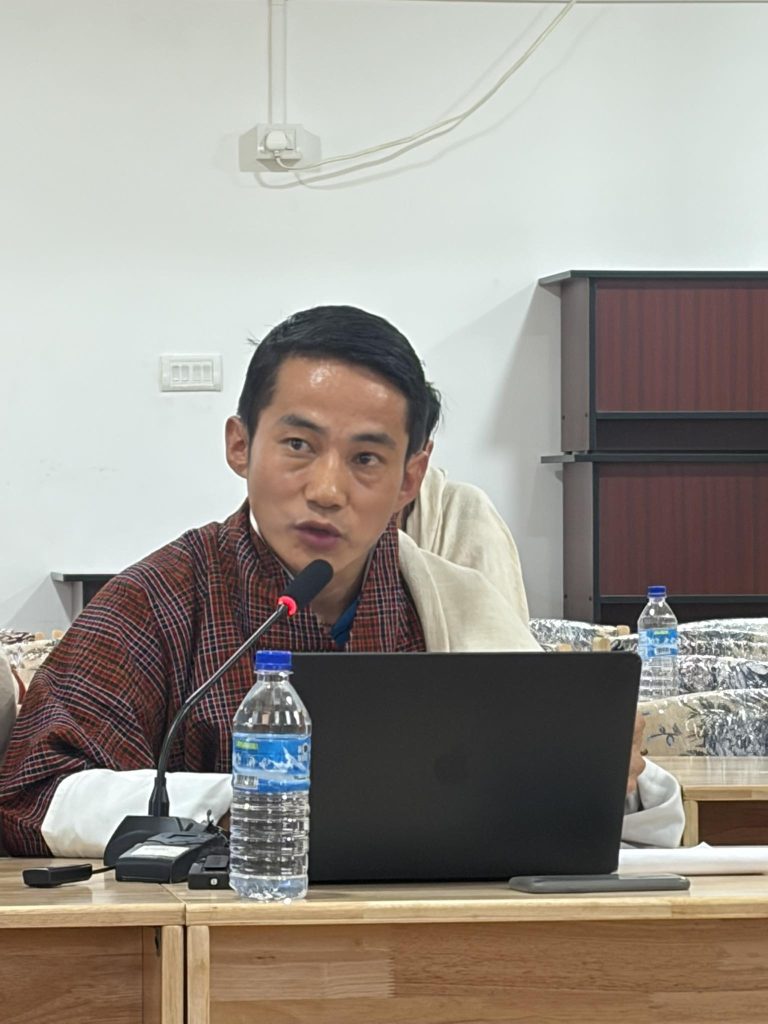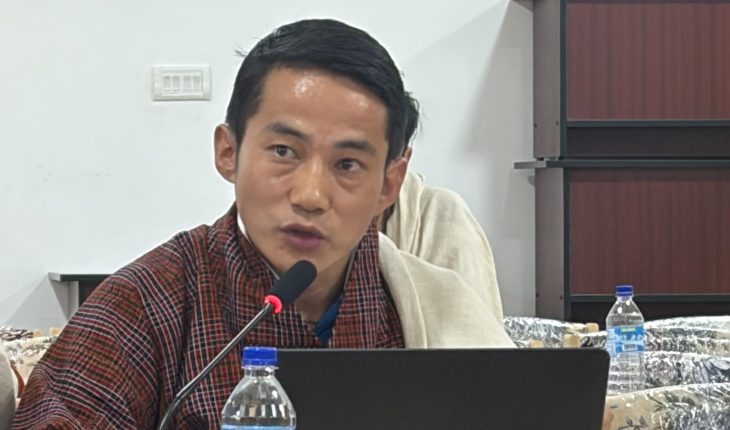
DAWA ZANGMO | Thimphu
The Ministry of Agriculture and Livestock (MoAL) has announced an extensive set of initiatives aimed at revitalising the agriculture and livestock sectors. The Ministry presented new strategies to make these fields more attractive, profitable, and sustainable for young Bhutanese, as concerns over rural depopulation and youth migration continue to grow.
While government programmes have long supported farmers with inputs and subsidies, many young people continue to leave villages in search of better opportunities. In response, the ministry said it is moving beyond short-term incentives to address deep-rooted structural challenges that have hindered youth participation in farming.
“The challenges in the agriculture sector are multifaceted, and there is no one-size-fits-all solution,” said Sonam Pelgen, Senior Planning Officer, Policy and Planning Division, Ministry of Agriculture and Livestock, during the 21st meet-the-press session. “Therefore, we are pursuing diverse interventions to effectively address these issues, focusing on modernisation, entrepreneurship, institutional reforms, and risk mitigation.”
To ease the drudgery of traditional farming, the Ministry is promoting large-scale mechanisation and technology adoption. It has distributed more than 400 mini-tillers to farmers in the six eastern Dzongkhags and continues to provide modern equipment such as power tillers, tractors, and rice.
The Ministry is also introducing automated protected agriculture systems and hydroponics to attract youth interested in innovative and sustainable farming methods. Officials said that technology-based solutions will be key to making agriculture a career that appeals to younger generations.
Another notable initiative under implementation is the establishment of commercial Chirub farms, designed to serve as model farms operated collectively by youth and Dessups. These farms will employ modern farming practices and act as training grounds for agricultural entrepreneurship.
“The Chirub farms will not only serve as learning hubs for modern agriculture but will also help develop entrepreneurial skills needed to transform farming into a business opportunity,” added Sonam Pelgen. The farms are expected to encourage youth to view agriculture as an enterprising career rather than a fallback option.
Infrastructure development remains a major focus under the 13th Five-Year Plan (FYP). The Ministry is constructing 24 new irrigation schemes and strengthening several others through local governments. Chain-link fencing, a flagship programme aimed at mitigating crop losses from wildlife, will be implemented with an investment of Nu. 5.1 billion. Already, 83 schemes were initiated in the previous fiscal year, and 130 more are underway this year.
To make farming more investment-friendly, the Ministry has institutionalised cost-sharing mechanisms for agriculture, livestock, marketing, and value chain development. The system supports farmers, especially young entrepreneurs, with initial capital while fostering ownership and accountability.
By co-investing in farm machinery, inputs, and infrastructure, farmers, including young ones, are empowered to operate sustainably, with technical support from the government,” he explained.
Efforts to digitise the agricultural sector are underway through the Farmers Registration System and Piggery and Poultry Farm Registration System. These registries will formalise farm ownership and operations, providing farmers easier access to credit, insurance, and government programmes.
To address acute labour shortages, the MoAL is also piloting a regulated foreign worker engagement system. This initiative will allow farms to employ trained foreign workers, enabling farmers to focus on value-added activities such as agribusiness management, product processing, and technology-based farm management.
Modernisation remains central to the Ministry’s youth engagement strategy. Digital tools, greenhouse farming, sensor-based irrigation, feed formulation technology, and livestock traceability systems are being promoted nationwide. Such innovations aim to make agriculture data-driven, efficient, and attractive to young Bhutanese who are comfortable with digital platforms and smart technologies.
Recognising the financial risks associated with farming, the MoAL will be launching the National Crop and Livestock Insurance Scheme to safeguard farmers against losses from natural disasters, pests, and human-wildlife conflicts, which currently destroy up to 43 per cent of crops annually.
Regional consultations have been held to finalise the scheme’s operational framework, with a nationwide rollout scheduled for November 11, 2025. The insurance is expected to enhance confidence among farmers and promote continued investment in agriculture and livestock ventures.
Reactions from the public have been cautiously optimistic. Many farmers welcomed the government’s focus on mechanisation and insurance coverage but expressed concerns over implementation and access.
Kinley Wandi, a farmer from Drepong gewog in Mongar, said that while the new initiatives are promising, “timely delivery of equipment and fair distribution will be key to ensuring that small farmers are not left behind.”
Another farmer, Kuenga Wangmo, an entrepreneur from Tsirang who operates a small vegetable farm, noted, “Programmes like the Chirub commercial farms sound encouraging. But we also need clear market linkages and support to sell our produce profitably.”
Meanwhile, rural residents expressed hope that the new cost-sharing and digital systems would simplify bureaucratic procedures. “If registration helps us get quicker access to loans and government services, that will make a real difference,” said Dhan Bdr Gurung, a poultry farmer from Tendu gewog in Samtse.
Some youth, however, said they remain sceptical. “Agriculture still feels like a risky and uncertain career,” cautioned Tshering Lhamo, a recent graduate from Royal Thimphu College in Thimphu. “If the government wants to attract youth, it must make the sector competitive, not just with subsidies, but through innovation and long-term security.”
“In essence, our approach goes beyond short-term incentives to tackle the structural and systemic barriers that have historically discouraged youth participation in farming,” Sonam Pelgen stated. “By combining technological innovation, entrepreneurship development, institutional reforms, and risk mitigation measures, we are creating a modern agricultural landscape that is profitable, resilient, and future-ready – one where Bhutanese youth can see meaningful, dignified, and sustainable careers.”
As Bhutan is implementing the 13th FYP, these initiatives mark a concerted effort to bridge the gap between tradition and innovation, ensuring that the nation’s fields not only feed its people but also provide its youth with a viable and dignified livelihood.





